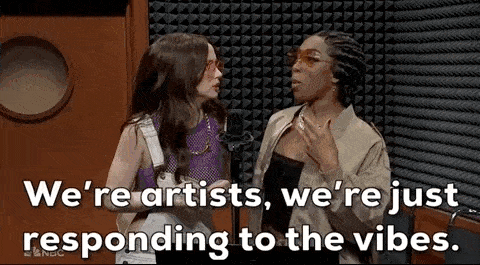In today’s work world, where the lines between office and home blur and company loyalty is built on more than just payday, workplace culture has become a hot topic. Culture isn’t just about what the company says on its website—it’s how things actually get done, how people feel, and what they value. And guess who’s front and centre in shaping that culture? Yep, you guessed it—the leaders.
Leaders play a starring role in making sure their workplace culture isn’t just a set of buzzwords, but a lived experience for everyone. So, how do they do it? By being role models, of course. But it’s not enough to talk the talk—they’ve got to walk the walk, too. Let’s dive into the ways leaders can model and reinforce workplace culture. Spoiler alert: it’s more than just sending out motivational emails.
What exactly is workplace culture? (and why should you care?)
Before we get into how leaders work their magic, let’s first figure out what workplace culture actually is. In a nutshell, workplace culture is the vibe of your organisation—it’s the collective mood, the way things get done, the values everyone shares (or should share, in theory), and how people behave. Think of it as the personality of your company. Some workplaces have that laid-back “we wear hoodies to work” vibe, while others might be more of a suits with a tie type of place.

A strong workplace culture means people are engaged, motivated, and ready to give their best. A not-so-great culture? Well, let’s just say it can lead to high turnover, low morale, and lots of awkward moments at the water cooler.
This is where leaders come in. They’re not just responsible for keeping the company running—they set the tone for how people feel about their work. So, no pressure, but how leaders behave can make or break your company’s culture.
How leaders model workplace culture
1. Practice What You Preach
Let’s start with the basics: If leaders want people to act a certain way, they’ve got to model that behaviour themselves. It’s like when parents tell their kids to eat their vegies but then scoff a bag of chips when no one’s looking. Employees are quick to spot any hypocrisy—and trust me, they will.
If your company values teamwork, leaders need to actively collaborate and help out when needed. If transparency is important, leaders should be upfront about what’s happening, even when the news isn’t all sunshine and rainbows. It’s pretty simple: people tend to mimic what they see, not what they hear.
2. Build Trust
Trust is like the glue that holds a team together. If people don’t trust their leaders, culture takes a nosedive. Leaders need to earn trust by being reliable, honest, and accountable. This means doing what they say they’ll do (because nothing kills trust faster than broken promises). This also means being consistent in your application of things like the company policies. If the only thing you are constant about is moving the goalposts, you will build uncertainty and resentment as your team will see you playing favourites and/or, they simply won’t know where they stand.
Oh, and owning up to mistakes helps too. If you mess up, admit it. Everyone makes mistakes—even the boss. We’re all human, right? When leaders take responsibility for their missteps, it creates an environment where employees feel safe to take risks and admit their own errors. It’s a win-win: more learning, more growth, fewer cover-ups.
3. Show People They Matter
Work-life balance isn’t just a buzzword; it’s something leaders need to actively promote. If leaders are burning the midnight oil every night and sending emails at 2 a.m., employees are going to feel pressured to follow suit. And that’s a fast track to burnout and either disengaged employees or high turnover of your team.
So, leaders, if you want your team to take time off and recharge, show them it’s okay to down tools and have a life outside work. Don’t be the person who’s “always on.” Encourage employees to unplug, take vacations, and actually use their lunch breaks. (Revolutionary, I know.)
4. Embrace Inclusivity - Don’t Just Talk About It
A truly great workplace culture is inclusive—it makes everyone feel like they belong. Leaders have to lead the charge here by making sure all voices are heard, respected, and valued. Don’t just hire people who look and think like you because guess what, diversity can deliver a boost to innovation which is brilliant for any business.
Leaders should seek input from different perspectives, take action on feedback, and make sure everyone has a seat at the table (where appropriate of course – sometimes you can’t manage everyone’s feedback on everything otherwise nothing will get done!). It’s good to remember that sometimes, the best ideas can come from the most unexpected places.
Reinforcing Culture
Modelling is great, but leaders also need to actively reinforce the culture they want to see. This happens in all sorts of ways—from how you hire people to the way you recognise their contributions.
1. Getting the right people on the bus
The cultural journey starts on day one. If leaders hire people who align with the company’s values, you’re already on the right track. Use the recruitment process to assess if candidates share your company’s mission and beliefs—not just whether they have the right skills.
Once they’re on board, leaders should make sure new hires understand the company’s culture from the get-go. Onboarding isn’t just about showing people where the coffee machine is—it’s about making sure they know how to succeed in your culture. (But knowing where to get the good coffee is important!)

2. Reward What You Want to See
Want to reinforce a particular behaviour? Recognise it. If you want people to collaborate more, reward the heck out of team players. If someone nails it in customer service, give them a shoutout. Positive reinforcement works wonders.
Recognition doesn’t always have to be a formal award. A quick thank you, public praise, or even just a friendly pat on the back (or virtual thumbs-up in the age of remote work) can go a long way in reinforcing the behaviours you want to see repeated. Leadership isn’t just about calling out the poor behaviour, it’s about acknowledging, highlighting and encouraging the wins too.
3. Keep talking about your values
If you want your culture to stick, you’ve got to keep talking about it. Leaders should weave the company’s values into every meeting, decision, and communication. This isn’t just about throwing in a motivational quote every now and then—it’s about making sure every action is tied back to your mission and values.
Pro tip: Make sure the company’s values aren’t just something plastered on the wall (or website). Leaders should make them a living, breathing part of everyday work life.
4. Make decisions that reflect your values
Every decision a leader makes says something about the company’s culture. If innovation is a key value, leaders should be the first to encourage new ideas, even if they fail. If sustainability is a core belief, leaders need to back that up by making environmentally responsible choices.
Ultimately, decisions need to align with what you say is important. Otherwise, your culture starts to feel more like lip service than reality.
5. Handle conflict like a boss
How leaders handle conflict can make or break a workplace culture. If conflicts are swept under the rug or dealt with unfairly, it can create an undercurrent of tension and distrust. But if leaders handle issues openly and fairly (being mindful of personal privacy or matters that require some confidentiality of course), it reinforces a culture of respect and accountability.
Whether it’s a disagreement between team members or a larger organisational challenge, leaders should encourage open dialogue, mediate fairly, and make sure everyone feels heard.
Rolling with the times
Workplace culture isn’t a “set and forget” kind of thing. It evolves—just like the people in your company and the world around you. Great leaders keep their finger on the pulse and adapt their approach as the culture changes.
Take remote work, for example. The pandemic forced many leaders to rethink how they manage teams, communicate, and keep people engaged from a distance. Those who embraced flexibility and used technology to stay connected showed that their culture could evolve without losing its core values.
And with new generations entering the workforce (looking at you, Gen Z), leaders need to be aware of shifting expectations around diversity, purpose-driven work, and social responsibility. The companies that adapt their culture to meet these needs are the ones that will attract and keep top talent.
Great leaders are the heart and soul of workplace culture. They set the example, reinforce the values, and create an environment where employees feel happy, engaged, and ready to give their best. By leading with authenticity, reinforcing the right behaviours, and staying flexible as culture evolves, leaders can build a culture that doesn’t just work—it thrives.
Wat to develop values that represent your company and underscore a positive team culture? Maybe you want to address some skill gaps in your leadership team or you need some help in assessing where issues lie and how you might look at rebuilding your company culture. Contact the HR Staff n’ Stuff team – we’re here to help when you need us!







